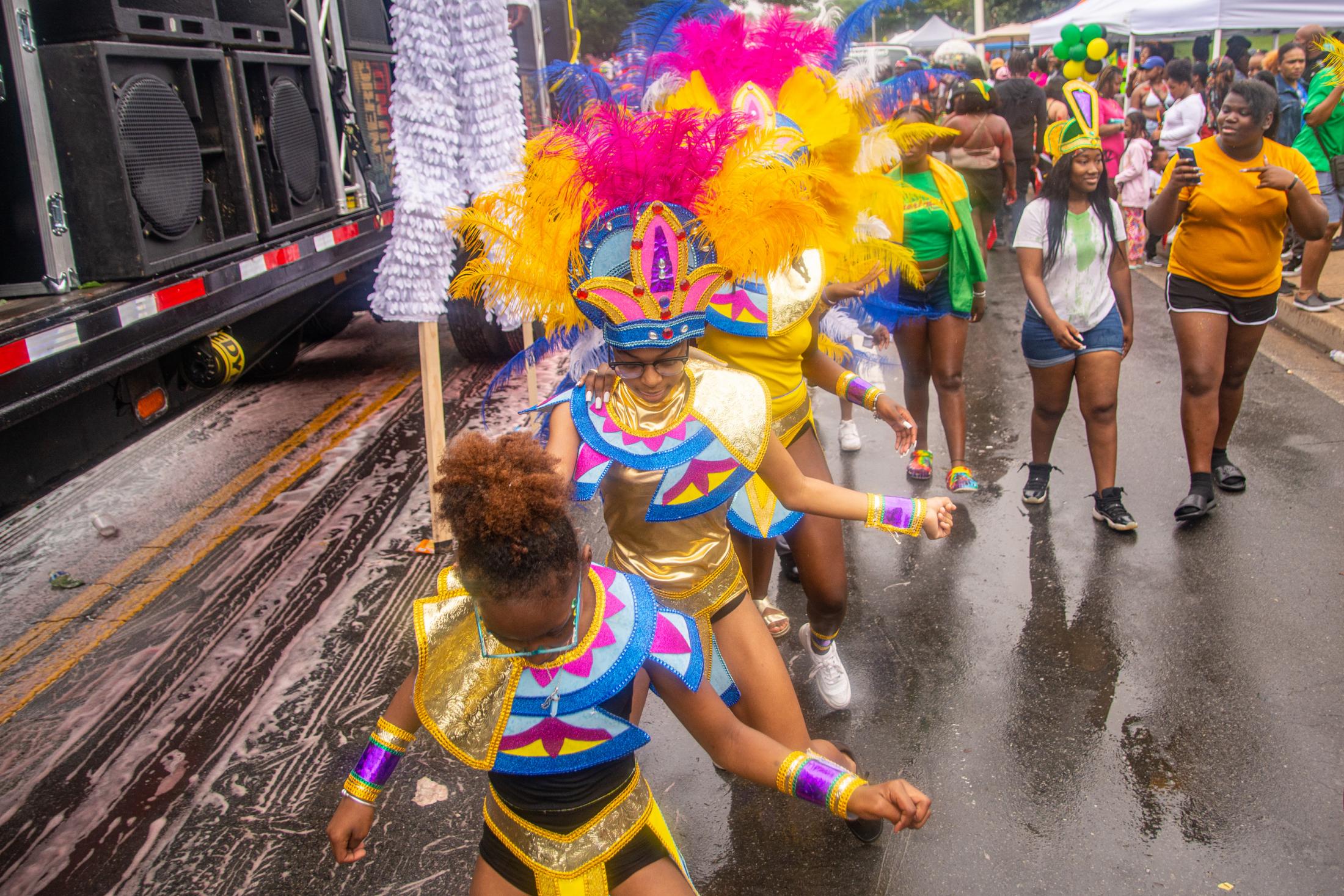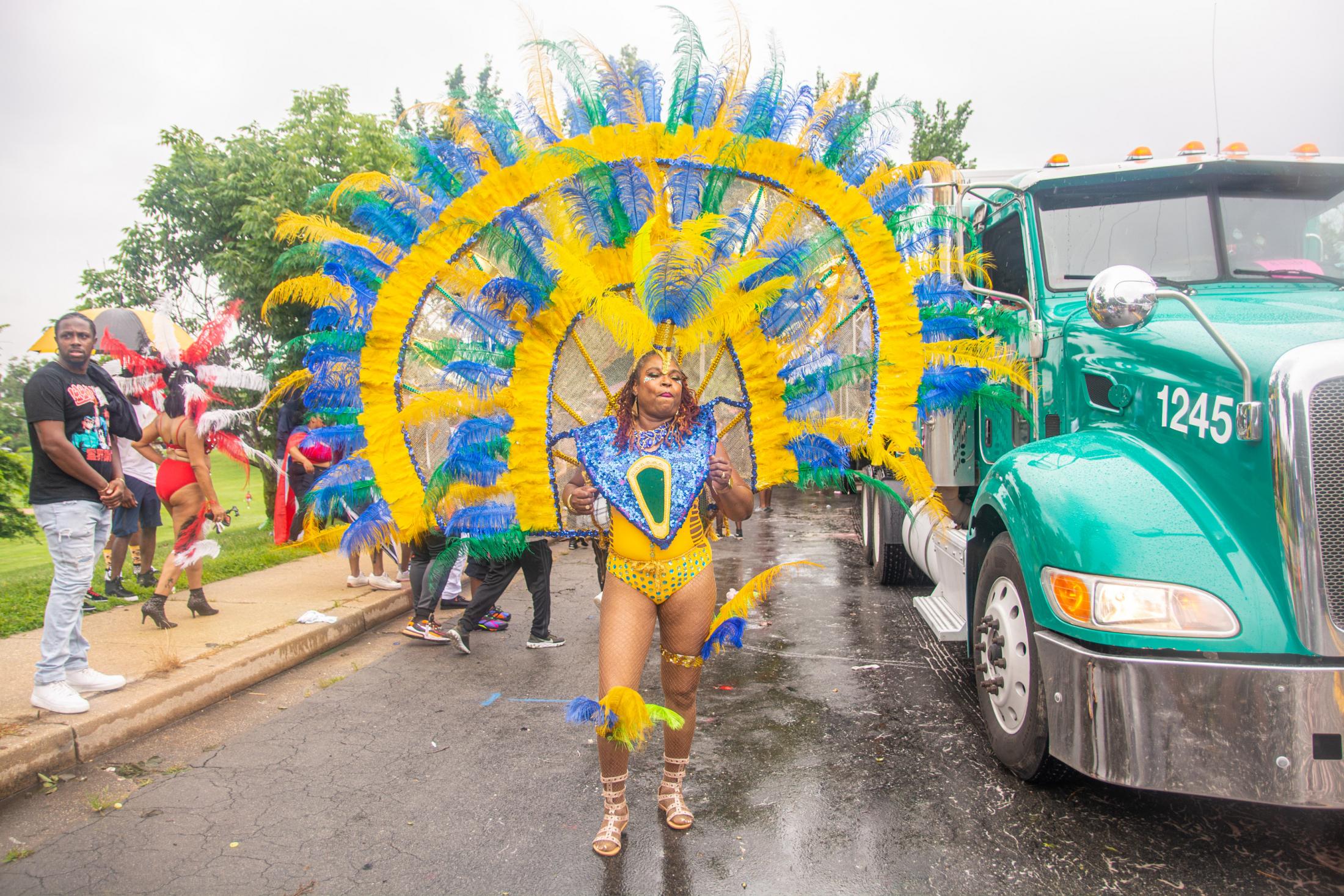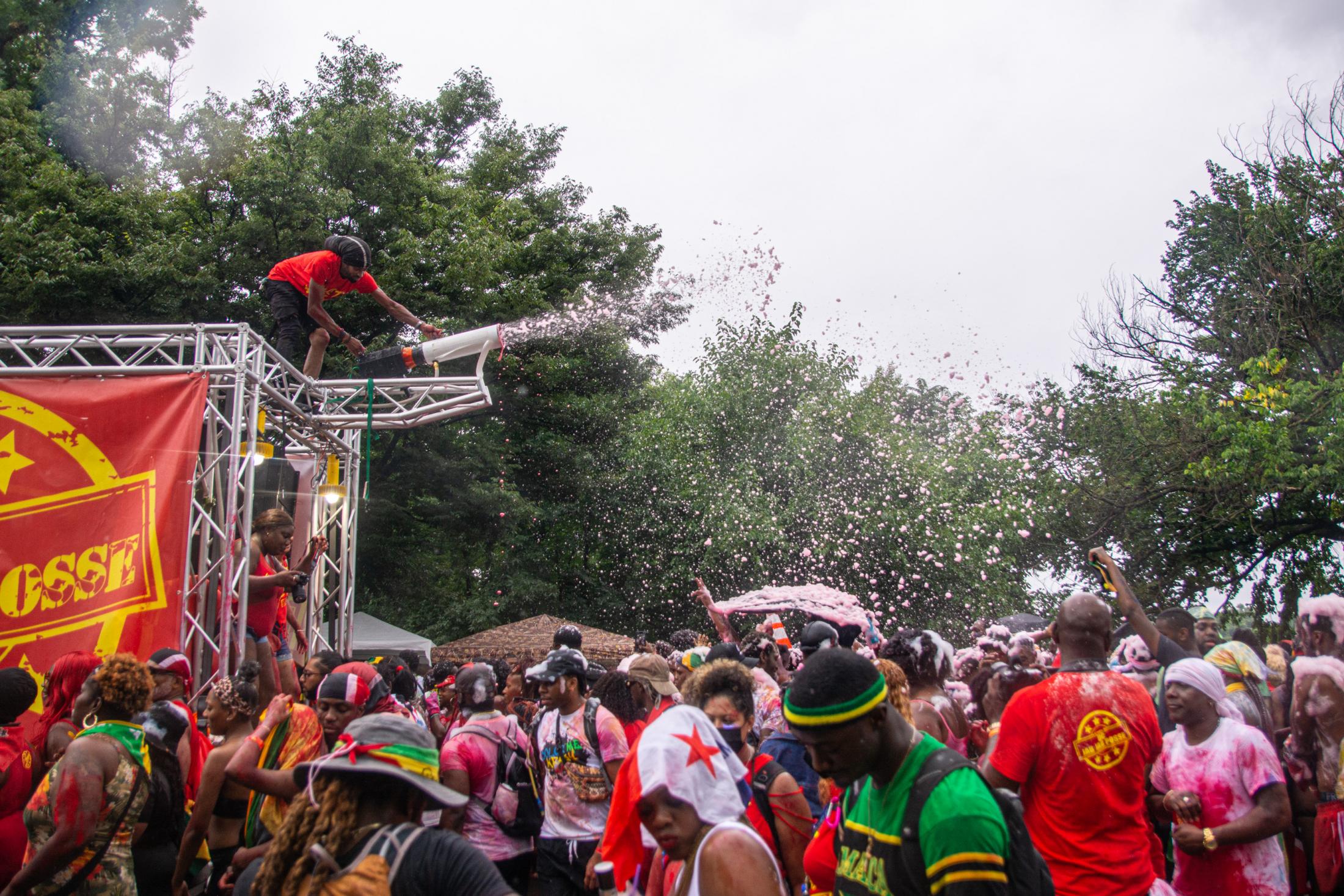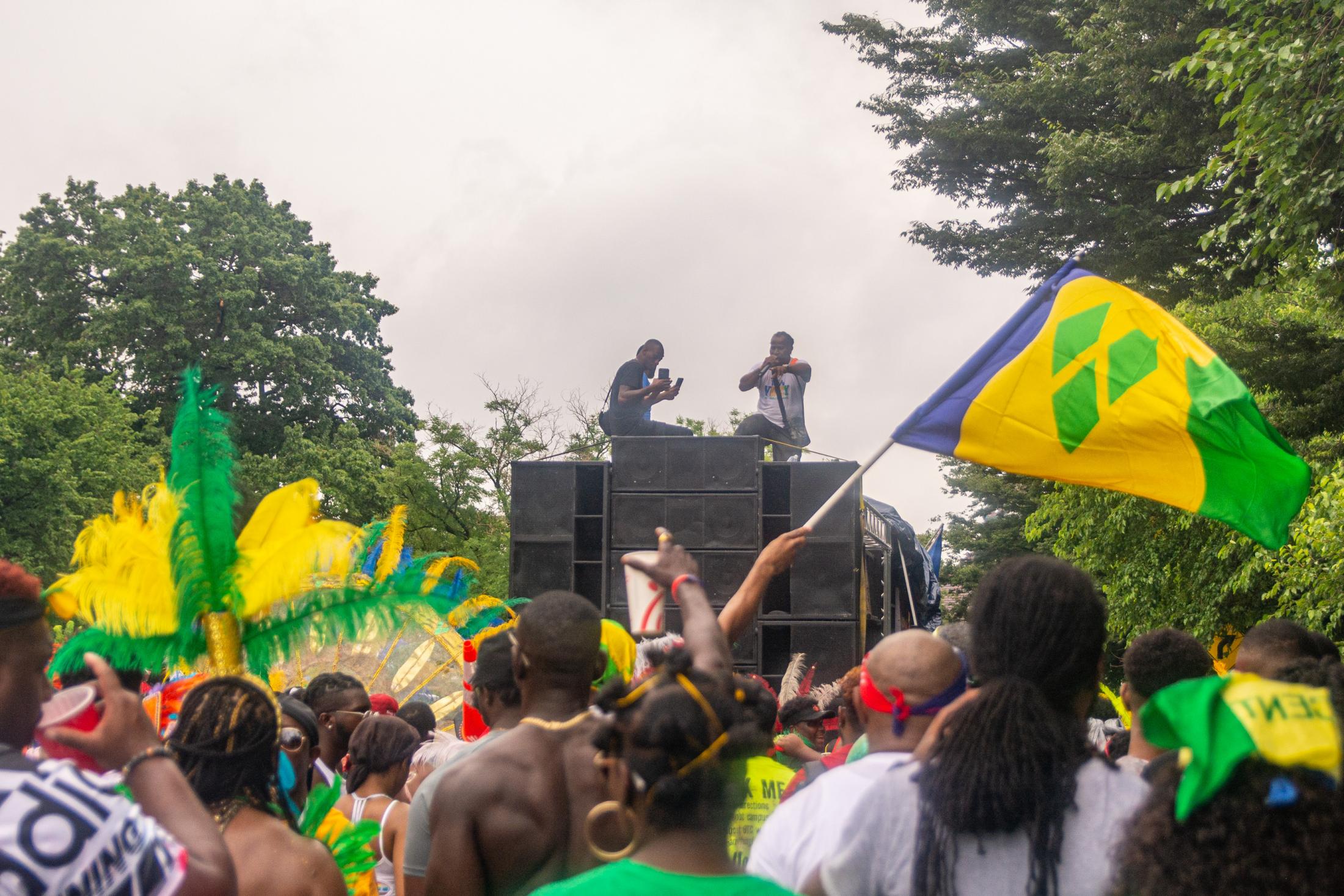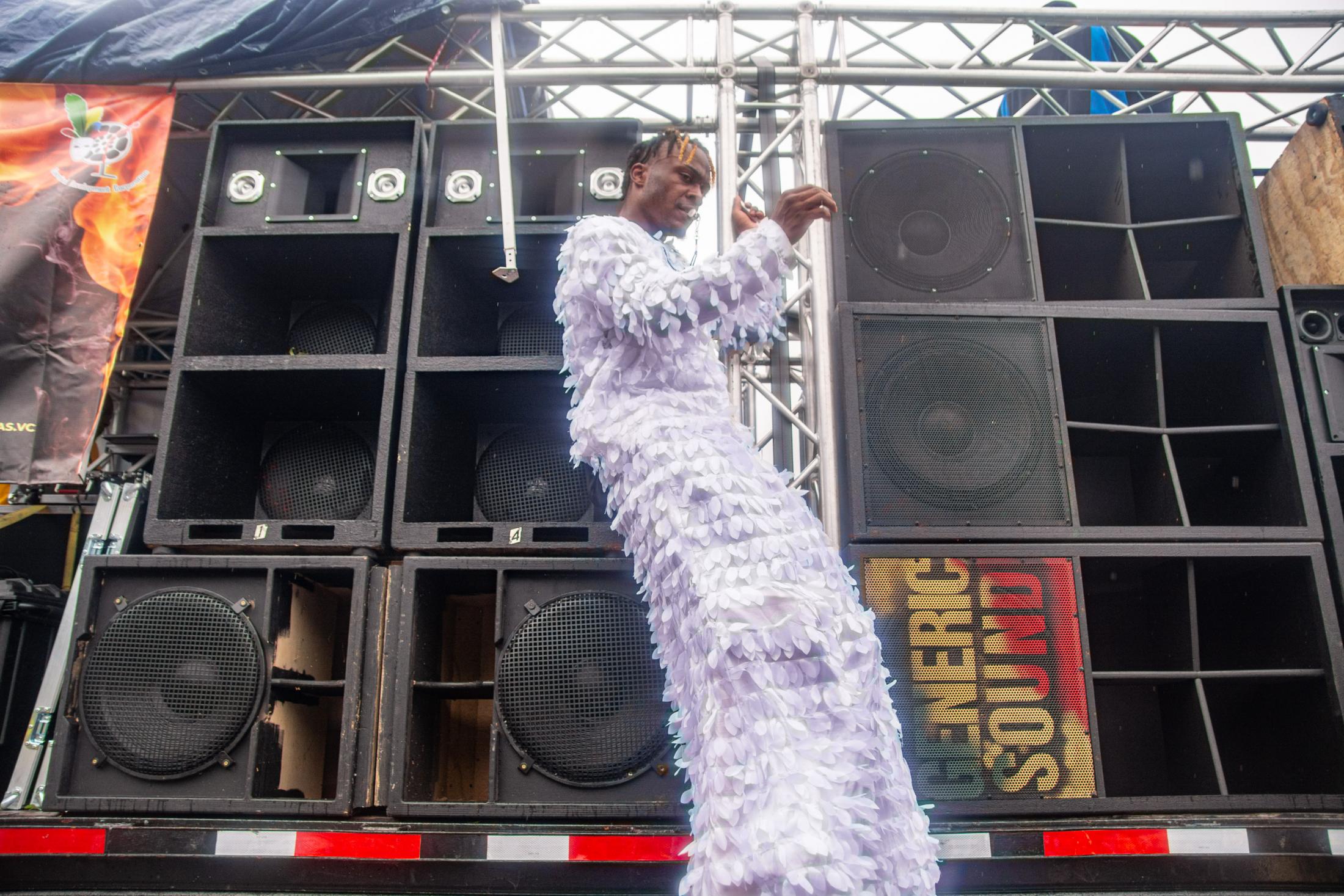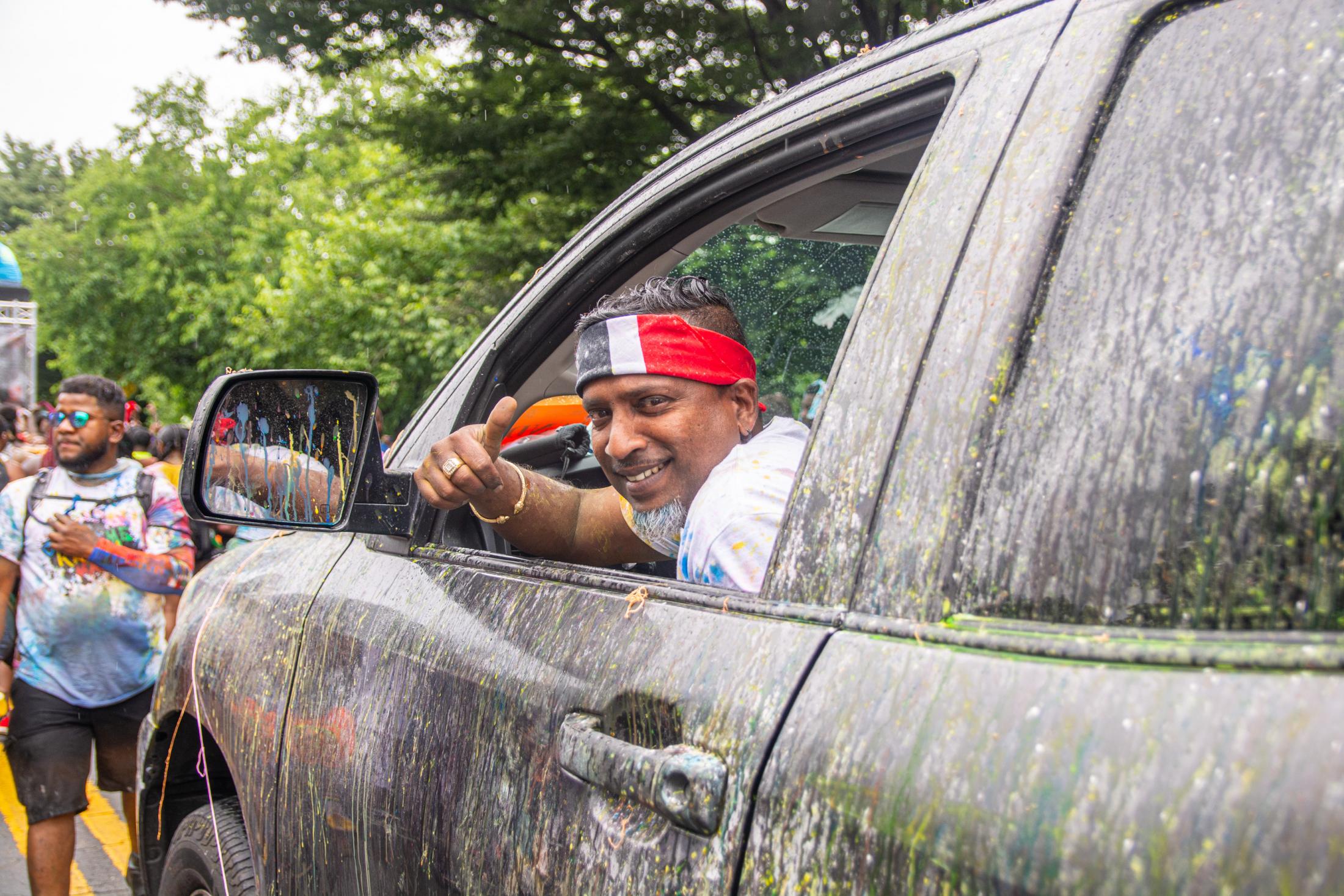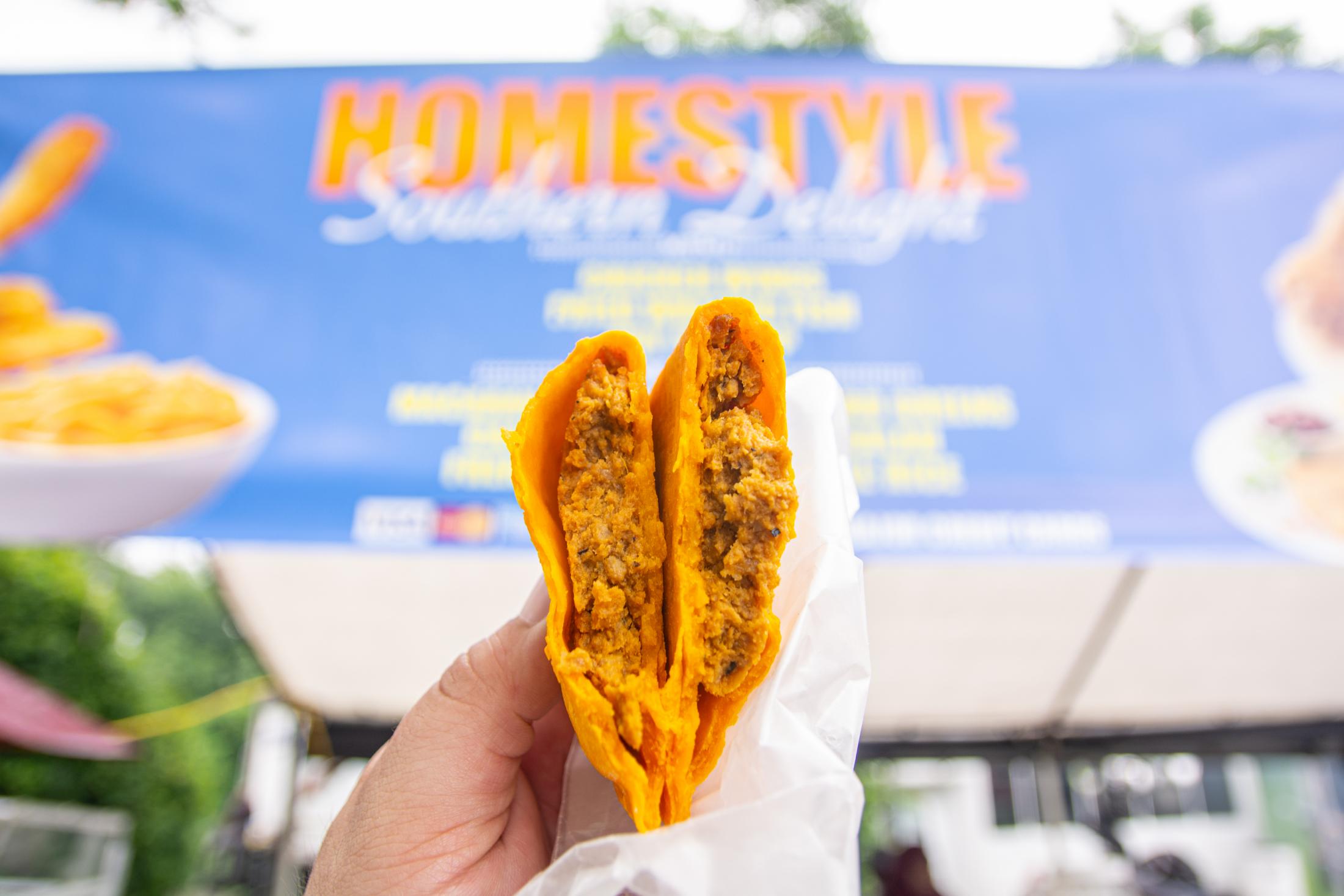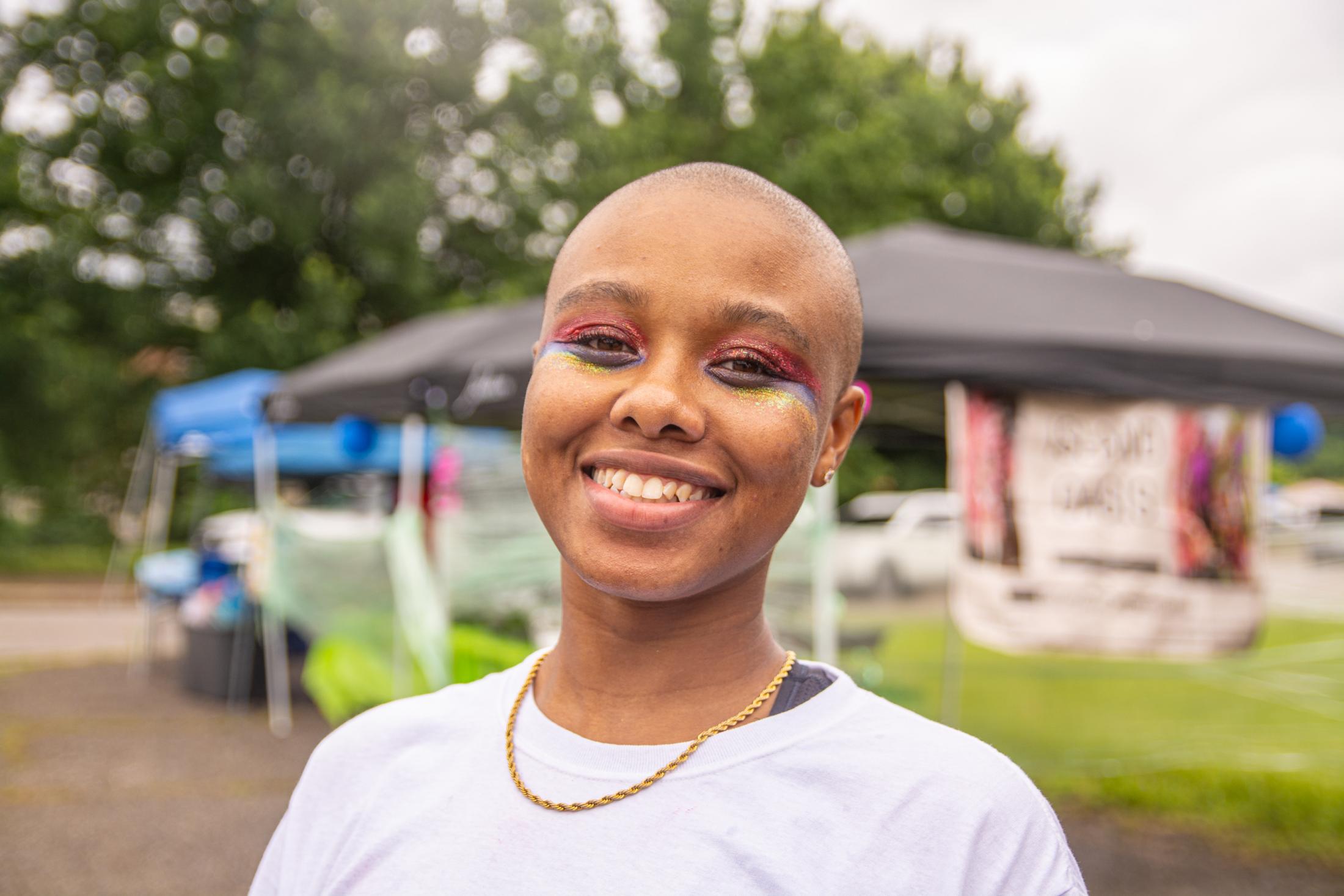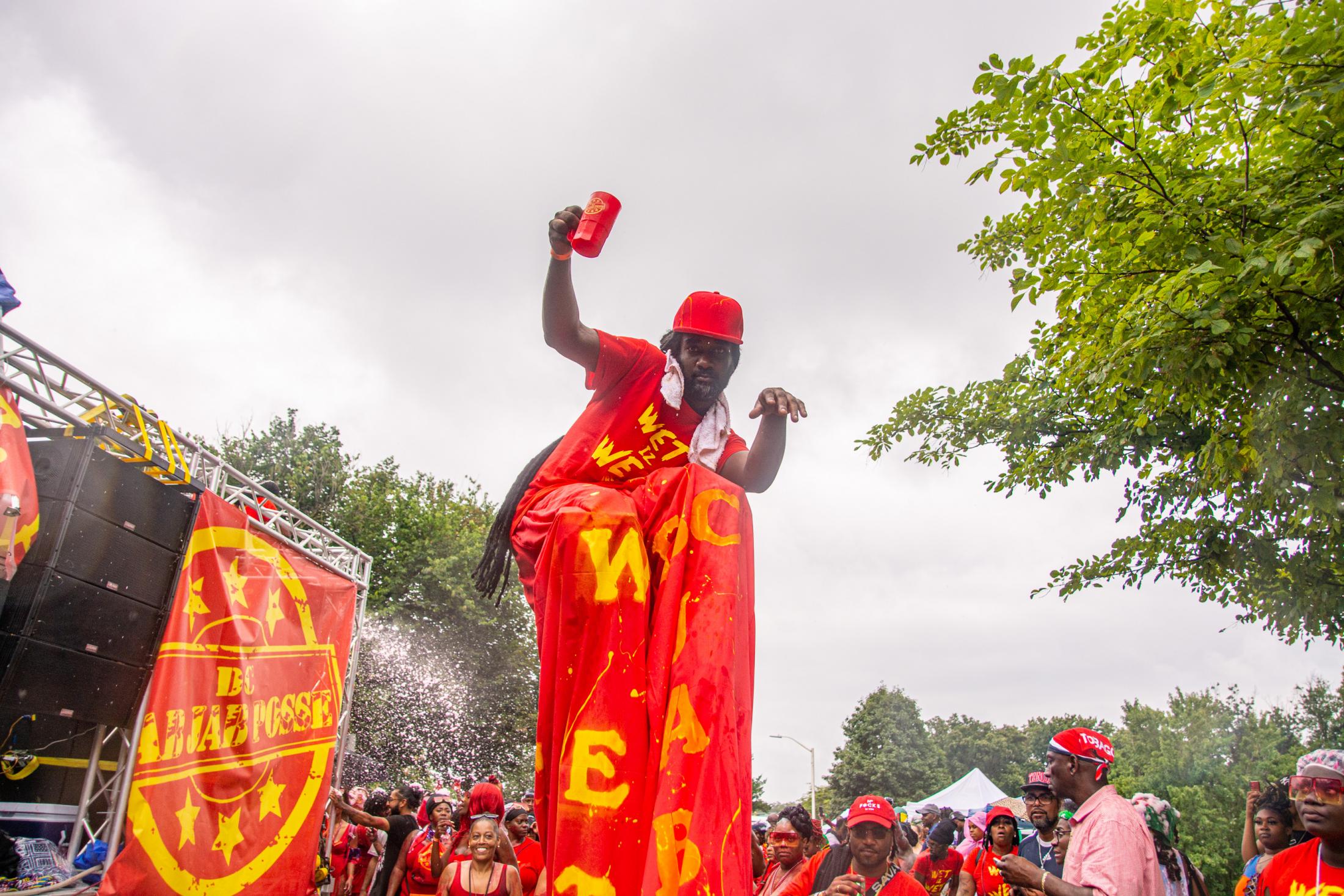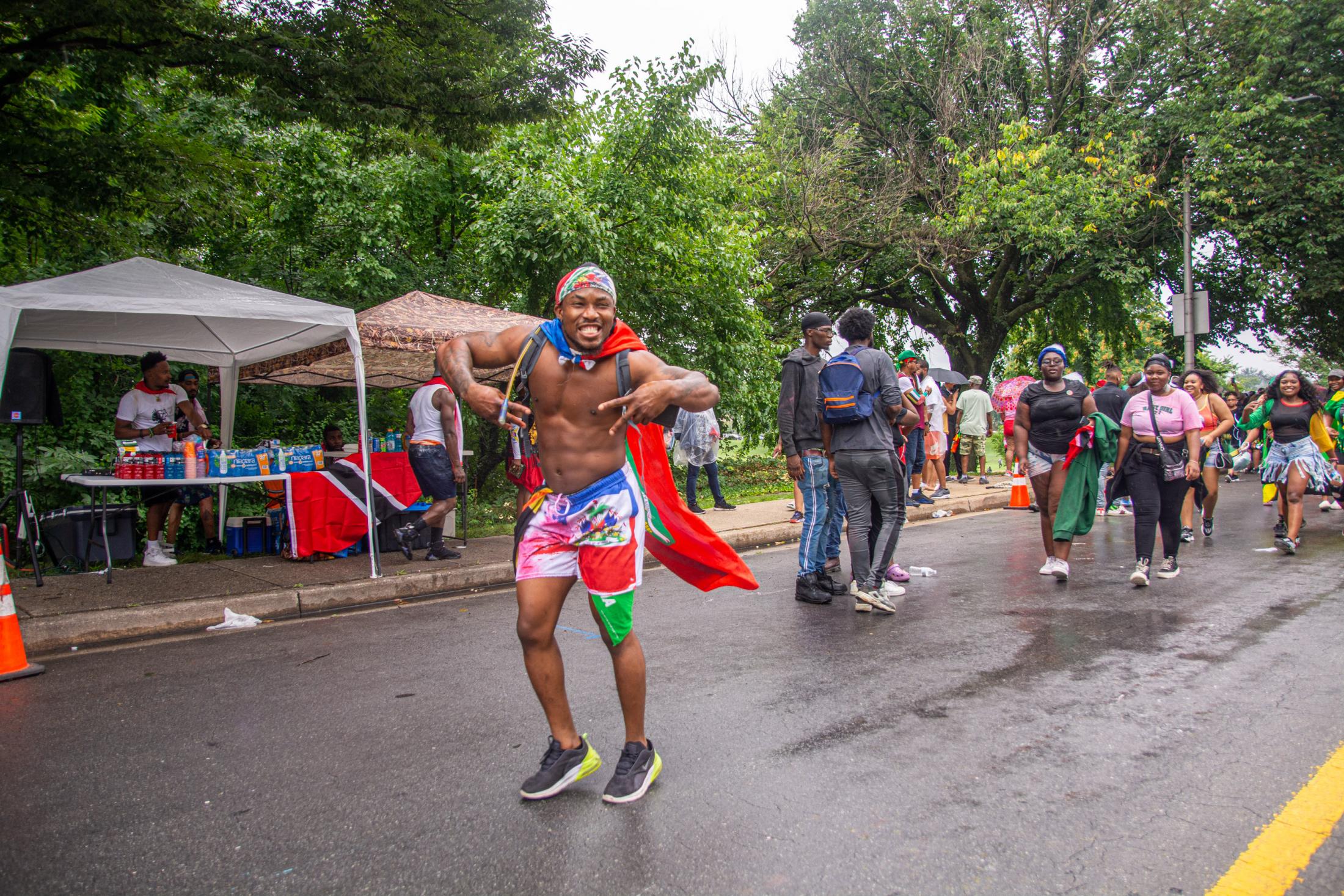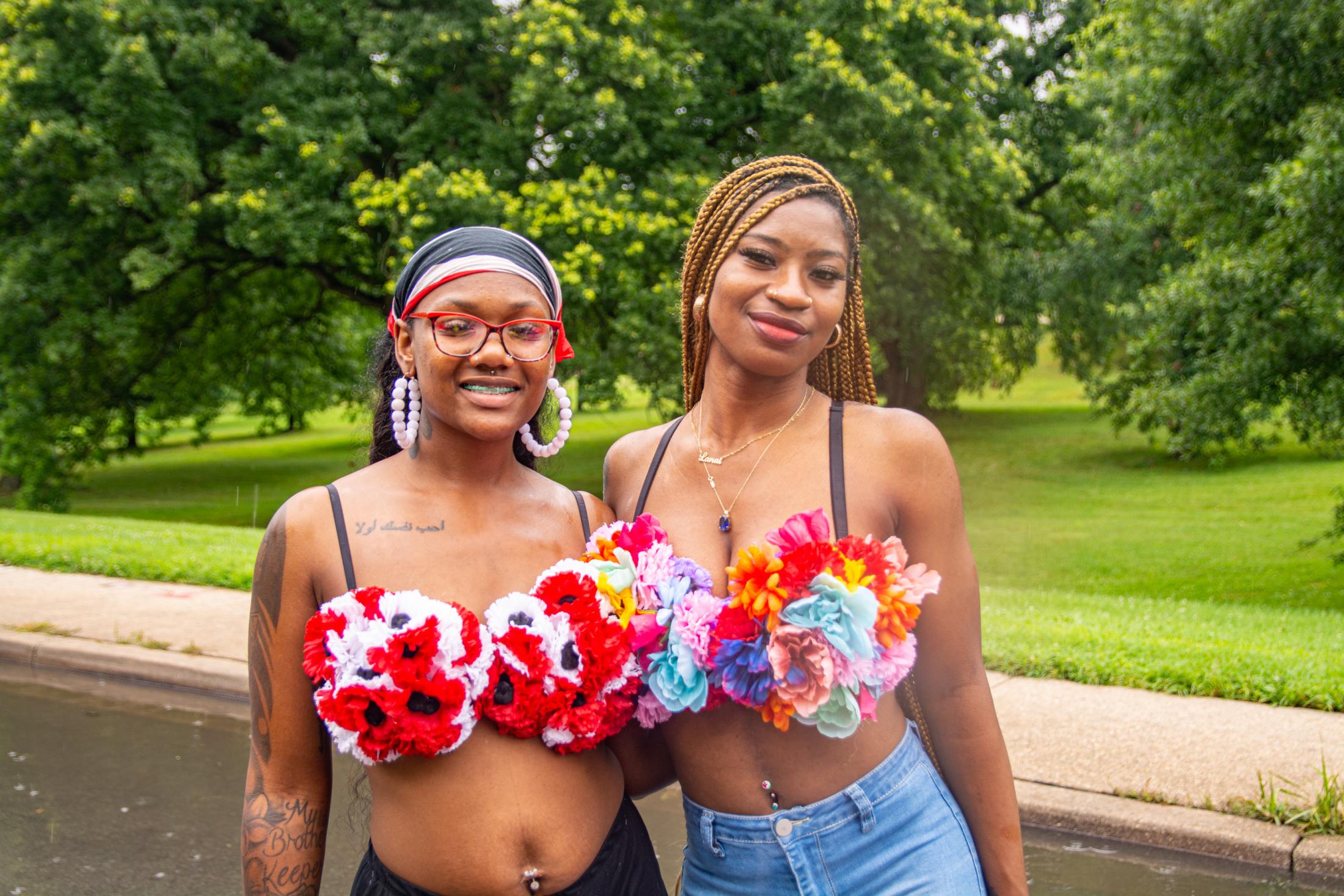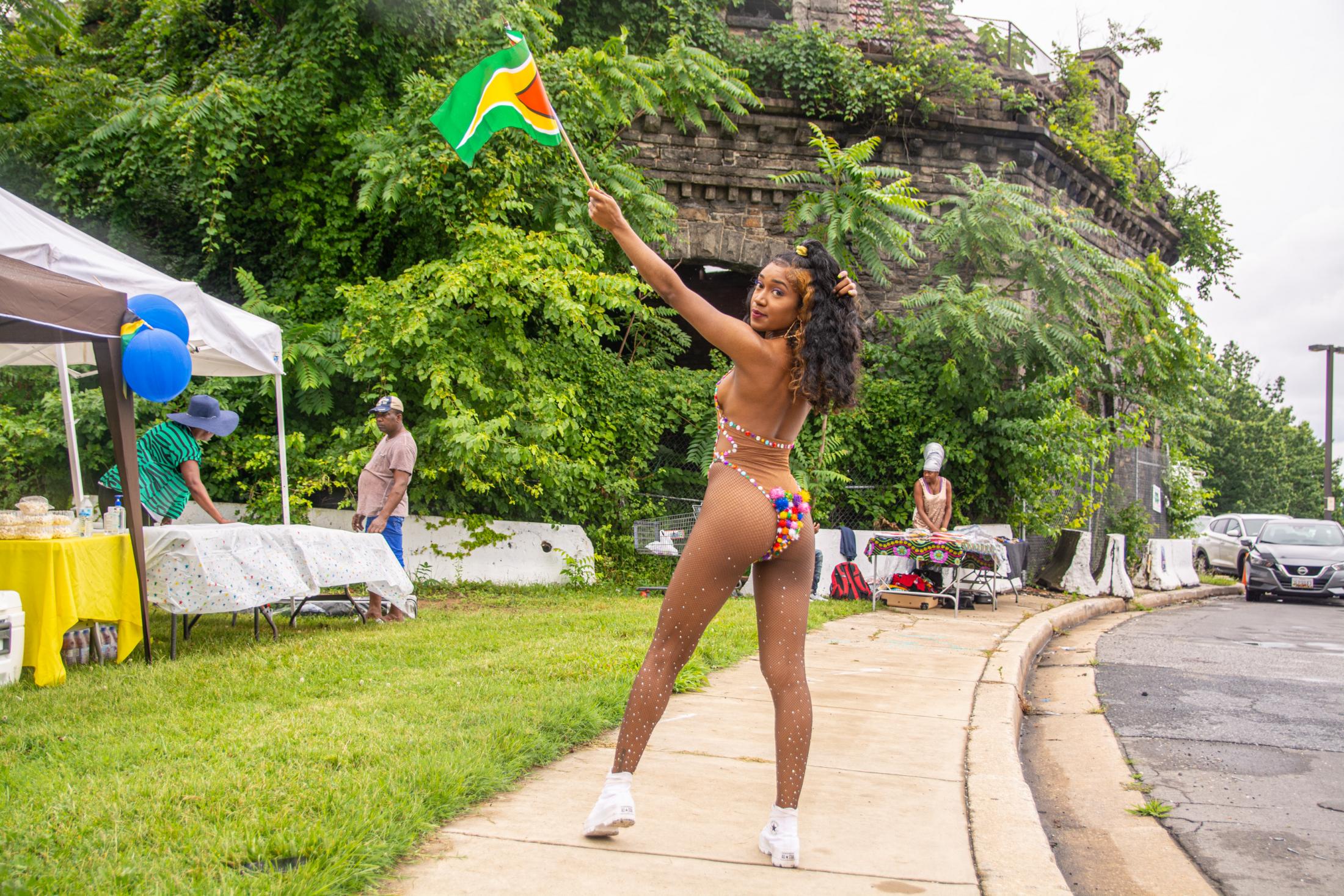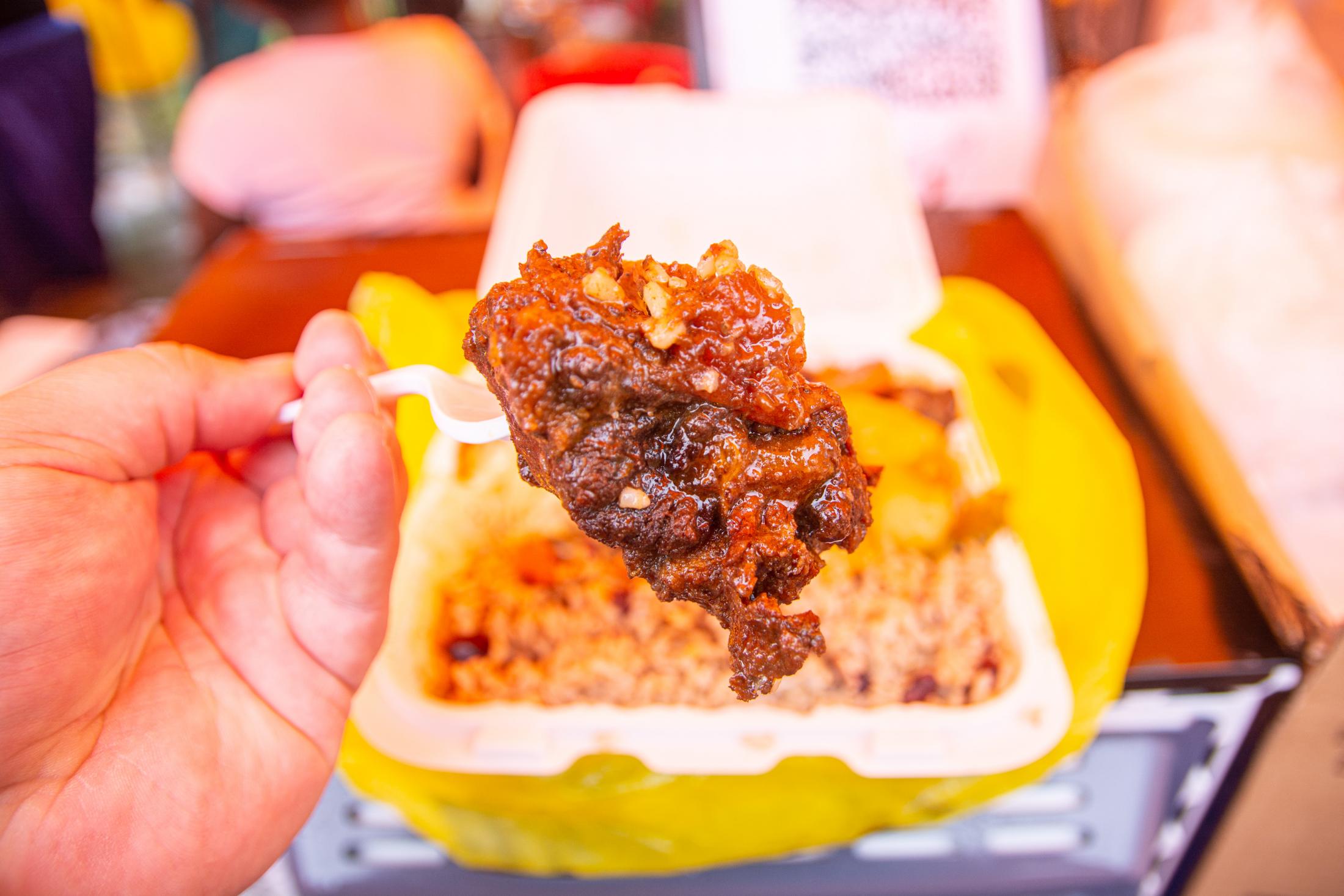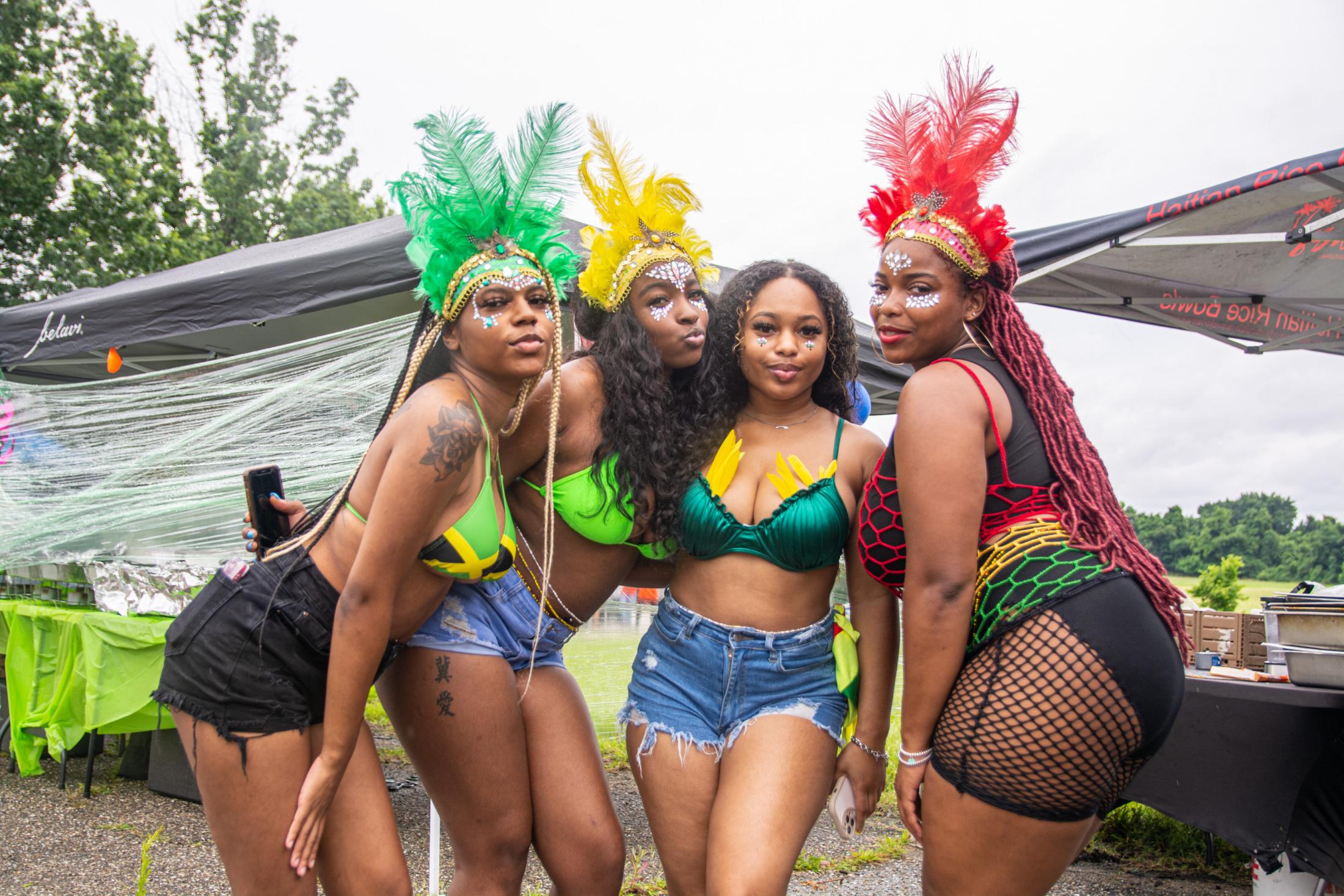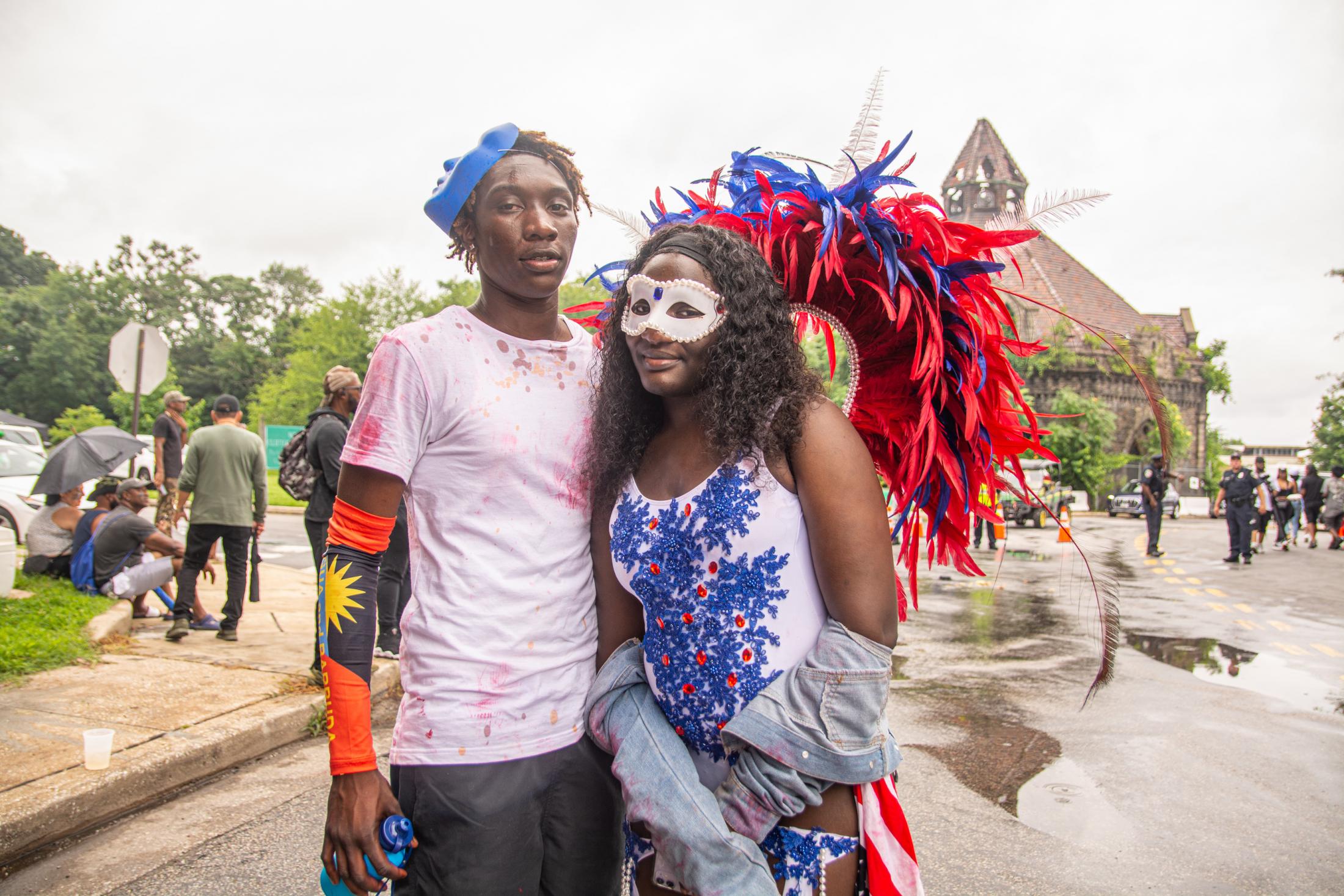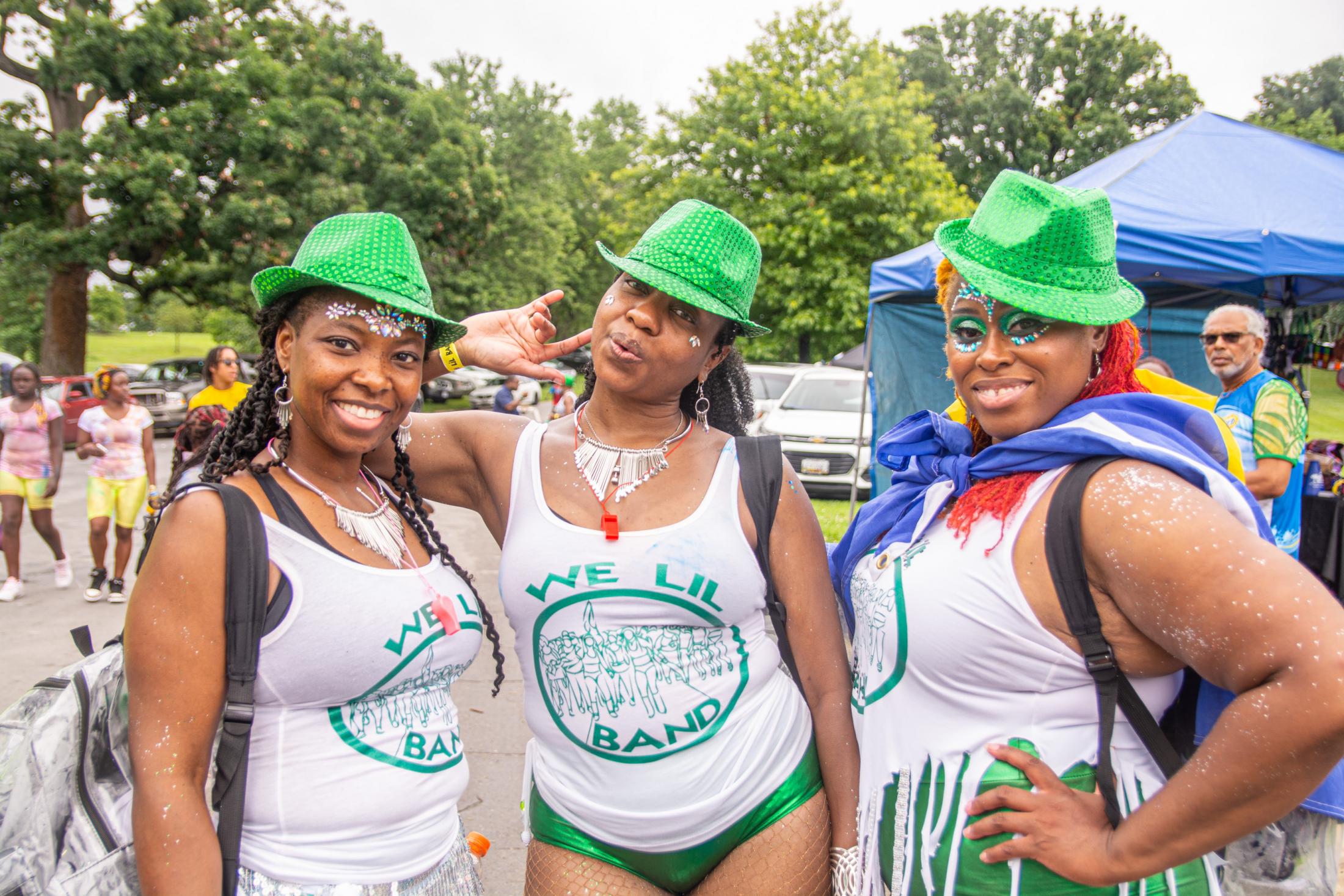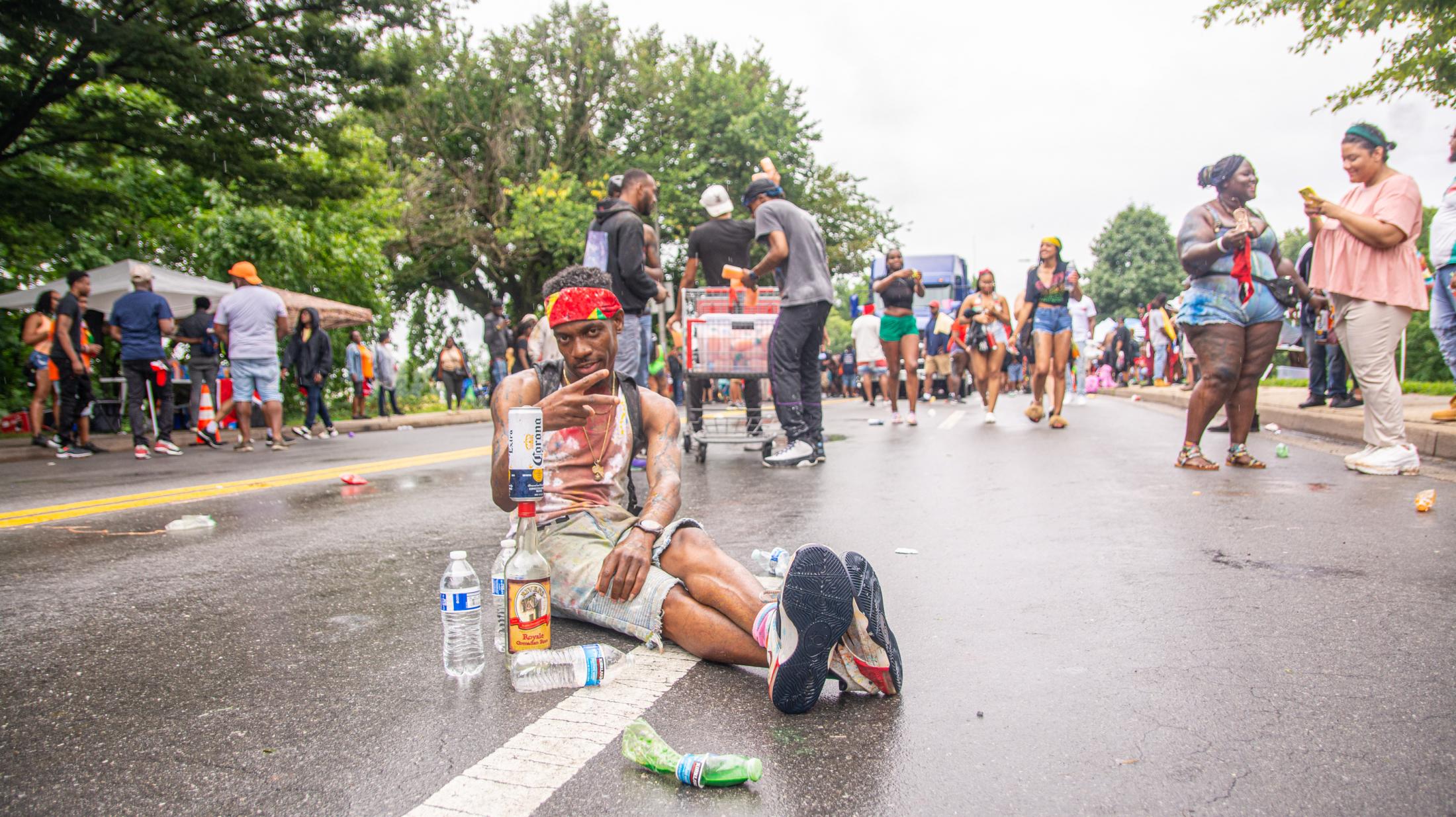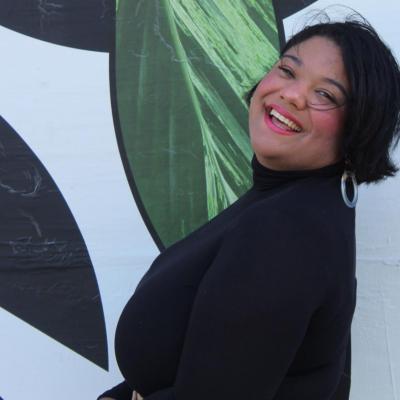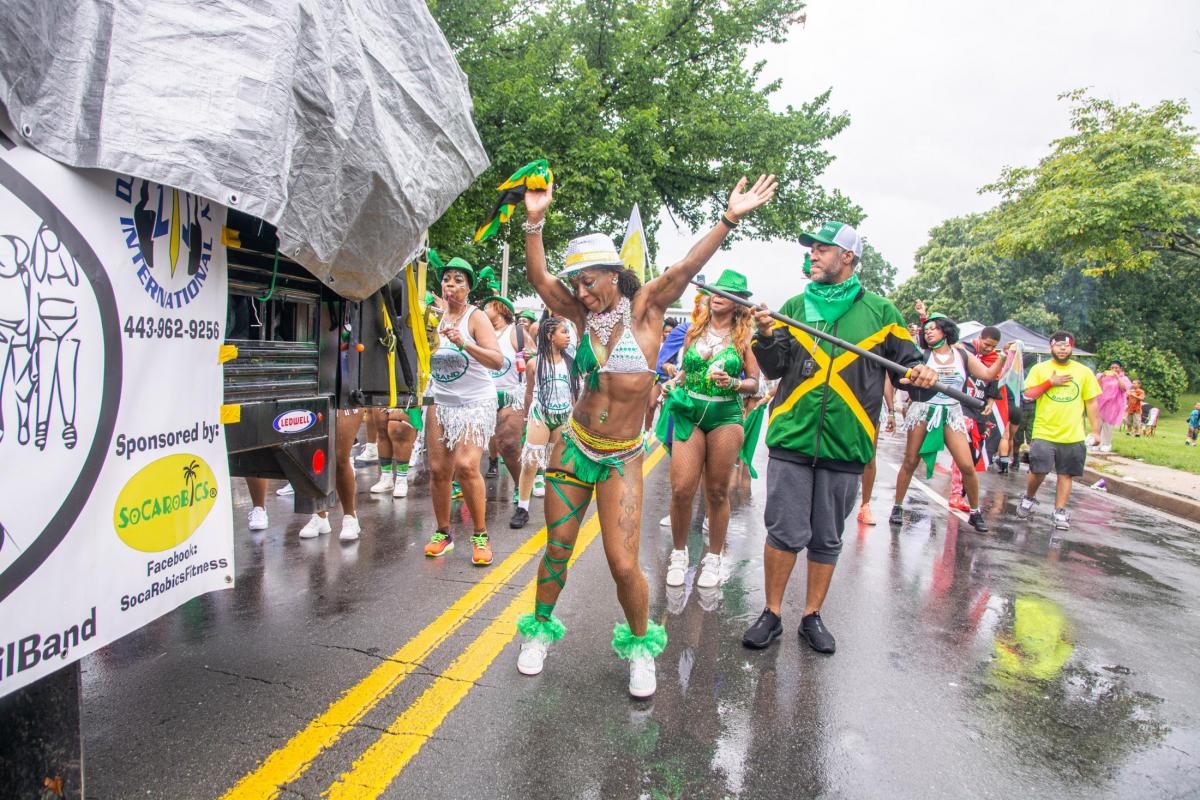
Though it’s drizzling, and a heavy fog hangs over Clifton Park, small groups begin to filter through The Alameda. Some are sporting rain ponchos and others, in their summer gear, start to position chairs and beach umbrellas in the grass. Along Harford Road, a food cart is preparing to sell shrimp baskets, grilled salmon, steamed crab, and hot fish. Another carries small bags of Quenepa (Spanish Lime)—a green-skinned stone fruit with a tart, orange flesh. “Just eat the fruit,” the vendor explains. “Don’t chew the seed!”
Much closer to the park—where the field is packed with tented stations selling curry goat, beef patties, oxtail, ginger juice, and anklets—other purveyors offer bottled punch with Hennesy and miniature Haitian and Jamaican flags.
Soon enough, the blocked-off stretch where Harford Road meets St. Lo Drive is overcome with pink-ish foam, thick clouds of marijuana smoke, and parade participants dressed head to toe in multicolored feathers. Calypso drums and Afrobeats are booming. Hearts are braided into sides of heads. A stilt walker sips liquor from the bottle while suspended in the air. And all around, bare-skinned pedestrians are dancing and embracing in the puddled streets. Among them is Anika Moore-Dorsey, 36, from Prince George’s County. “To be among my people and my [Trinidadian] culture…I just love it,” she says.
This was the scene at the annual Baltimore Washington One Carnival, which returned to Northeast Baltimore after a two-year hiatus this past weekend. Though the weather was damp on parade day Saturday, a little rain wasn’t going to stop Baltimoreans from celebrating with Caribbean fashion, native eats and drinks, and traditional music in the event’s 41st year.
“After a hiatus for two years, everyone is just excited—this is an exciting moment,” Elaine Simon, the president of the Caribbean-American Carnival Association of Baltimore (CACAB), told us before the festival. A native of Antigua and Barbuda, Simon came to Baltimore in 1973, and she’s held her post with the CACAB for the past 20 years. Although the association works hard to organize vendors and bring the fun, Simon says that the mission behind the event is much deeper.
“Being from the Caribbean Islands, and having grown up [celebrating] Carnival, we bring a portion of that beauty to America, wherever we reside,” Simon says. “Like we say, ‘It’s in the blood.’ We have to leave a legacy for our children and our children’s children. We have to be the advocates, the ambassadors for each island that we represent. It gives me immense pleasure to watch younger people get dressed up and carry on the culture.”
Below, Baltimore photographer Sean Dackermann compiles the most captivating sights from this year’s Carnival:
